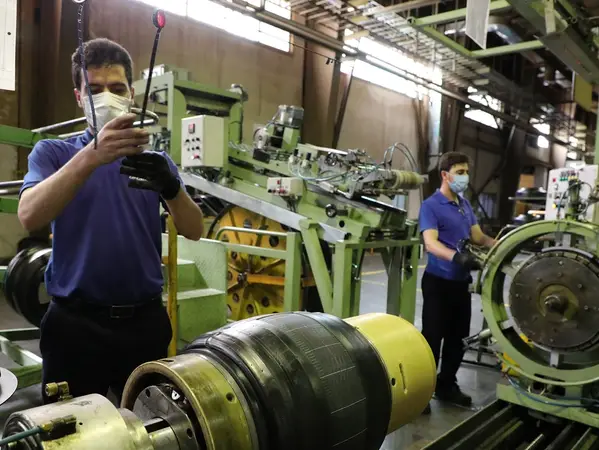The level of production in Iran has hit the lowest point in recent years due to an increase in energy prices and the devaluation of the national currency rial – in addition to the cumulative impact of US sanctions.
According to the latest report released by the Research Center of Iran Chamber of Commerce in early-February, growing unemployment as well as internet shutdowns or restrictions also contributed to the unprecedented crisis in the production sector.
The report is based on the Purchasing Managers Index (PMI), which is a measure of the prevailing direction of economic trends in the manufacturing and service sectors. The purpose of the index is to summarize whether market conditions, as viewed by purchasing managers, are expanding, staying the same, or contracting. It is supposed to provide information and useful insight about current and future business conditions to the decision makers, analysts, and investors. The PMI is derived from a monthly survey of supply chain managers across many industries, covering both upstream and downstream activities.
The latest report on this indicator of overall economic activity proves that the country’s production sector has been contracting to an alarming level, with the index dropping to below 40, while a number less than 50 means economic contraction.
The report added that a survey of economic enterprises indicates that this record-breaking fall in the entire economy is caused by factors such as a rise in production costs due to inflation and instability in the exchange rates, which had already put pressure on economic enterprises. However, the new issue that has been added to the equation is the challenge to supply energy to producers.
Iran is facing a serious natural gas shortage in winter months as output at its gas fields gradually declines due to lack of investments and Western technology. To keep homes warm, the government reduces gas supplies to steel makers, refineries and a host of medium-sized enterprises.
Another index that factored in the report pertained to “the extent of business activities,” indicating that in all three main sectors of the economy, i.e. industry, services and agriculture, activity has dramatically decreased.
The index of "inventory of raw materials or purchased supplies" in the previous Iranian month (which ended on January 20) saw the sharpest decrease rate in the past 27 months. The significant devaluation of the rial and the resulting price inflation have disturbed the supply chains for producers who cannot secure their required raw materials.
Some of the other indices that contributed to a drop in PMI are growing unemployment, fewer customer orders, and less exports of goods and services, as well as sales in general.
Head of the Research Center of Iran Chamber of Commerce Mohammad Ghasemi told Donya-e-Eqtesad daily that the new report shows the Islamic Republic “has been removed from the map of international trade,” warning that “apart from its consequences for our economic growth, this has risks for our national security."
"The most painful result of these studies...is that the 'existence and absence of Iran's economy' does not have much effect on the international economy," he added, noting that it becomes very easy for the international community to inflict damage on the country’s economy. This means that sanctions and embargoes on Iran are irrelevant to the global supply chain and economy.
Emphasizing that "Foreign trade is one of the instruments of continuous economic growth," Ghasemi said that no country has ever prospered since the end of World War II without benefitting from the international trade.
